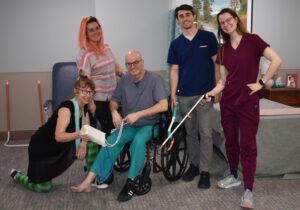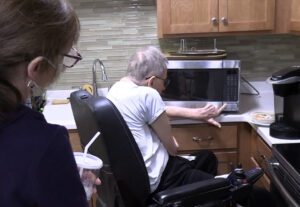What is Occupational Therapy?
Once a person enters the world of caring for older adults—either through their work in senior care or as an advocate for a family member or friend who is navigating the health care system—they quickly become familiar with the term Activities of Daily Living. Commonly known as ADLs, these actions that include walking, feeding, bathing, toileting, and maintaining personal hygiene are things we all do every day to live independently.
Perhaps lesser known, but equally important in terms of maintaining independence as we get older are IADLs. These Instrumental Activities of Daily Living may not be things we all do every single day, but the ability to complete these tasks goes a long way towards an improved quality of life. Conversely, the inability to perform IADLs on a consistent basis can be a major obstacle towards returning home after an injury or extended illness.
The Occupation of Living
Occupational Therapy (OT) uses science to focus on ADLs and IADLs that allow people to live safely and confidently at home. Taryn Bonke, a certified occupational therapy assistant at St. John’s, calls it the “occupation of living,” particularly if an injury or loss of function is likely to create new challenges at home.

In the period of time that rehabilitation guests spend at St. John’s, occupational therapy professionals work side-by-side with them to ensure that they will be able to perform necessary tasks upon returning to their homes at the time of discharge. IADLs like meal preparation, laundry, and accessing transportation must be accounted for prior to discharge, and occupational therapy professionals are problem-solvers who think ahead to show guests what life at home will look like. “We tell people — ‘let’s figure out a new way of doing this,’” says Bonke when describing how the OT team prepares guests for their “new normal” following their rehabilitation and to promote continued recovery.
A Multidisciplinary Therapy Experience

“We take therapy to a higher level,” says occupational therapist Dylan Power. At St. John’s Rehabilitation Center, occupational therapy partners with physical therapy, speech therapy, nursing, and other disciplines to ensure that guests benefit from a holistic approach to their recovery. “There is lots of crossover between what we do and what PT (physical therapy) and speech therapy do,” explains Power. “We all work together.”
Whether the setting is at a rehabilitation guest’s bedside or in the newly renovated OT apartment, occupational therapy helps identify a person’s abilities and limitations while keeping their desired discharge environment in mind. OT makes up an important part of the care team, working in tandem with other disciplines to ensure ADLs and IADLs are completed successfully and fostering a safe discharge back to an independent lifestyle.
